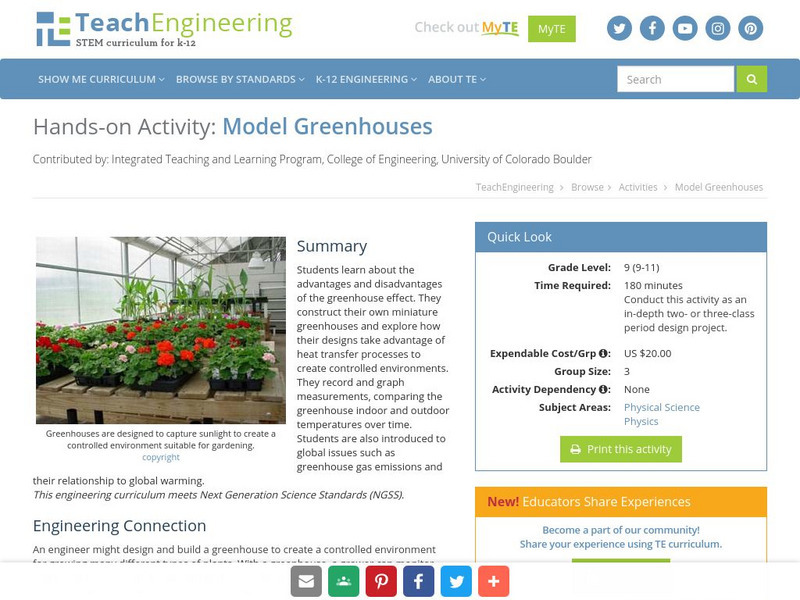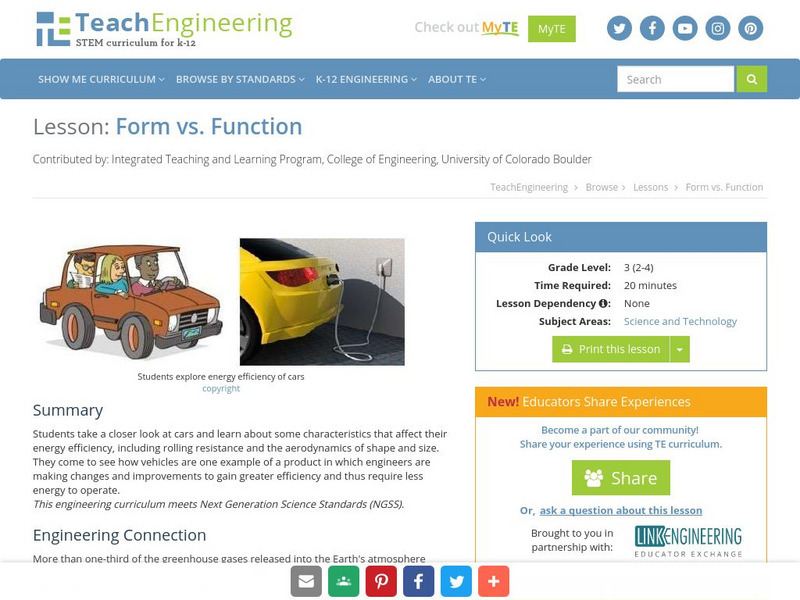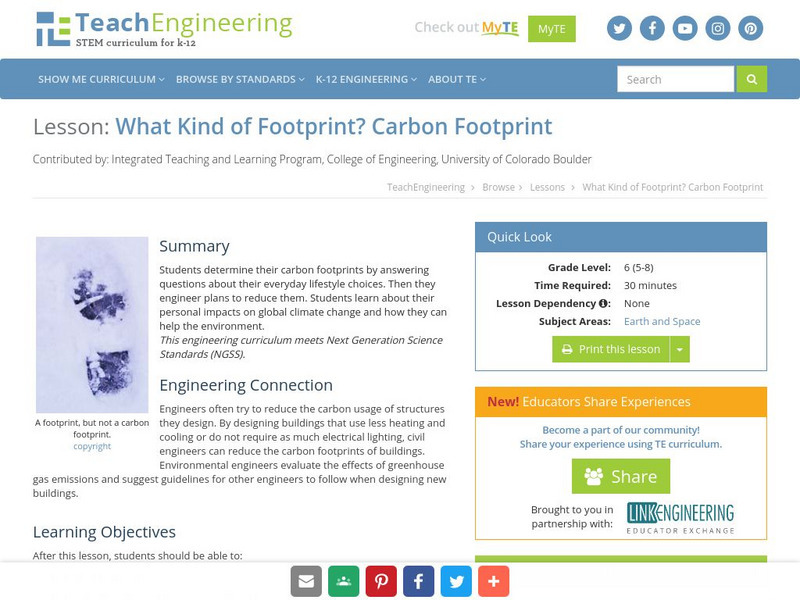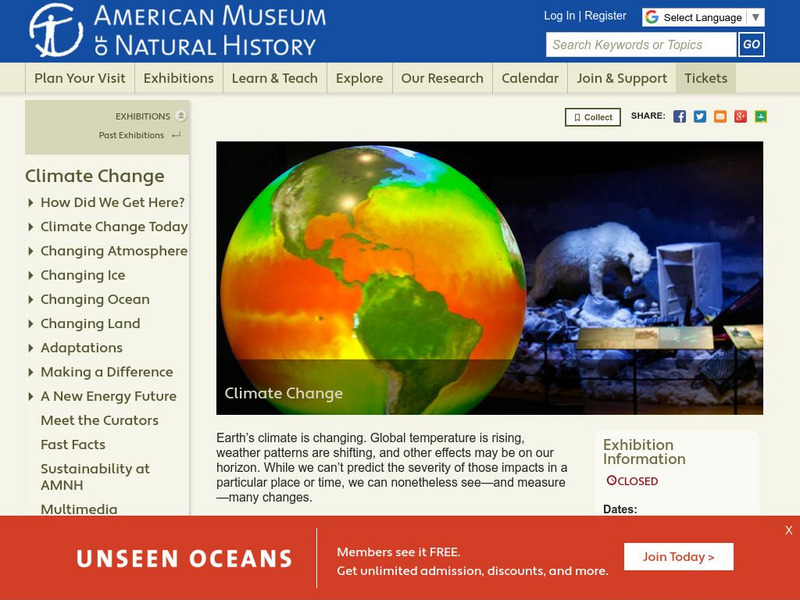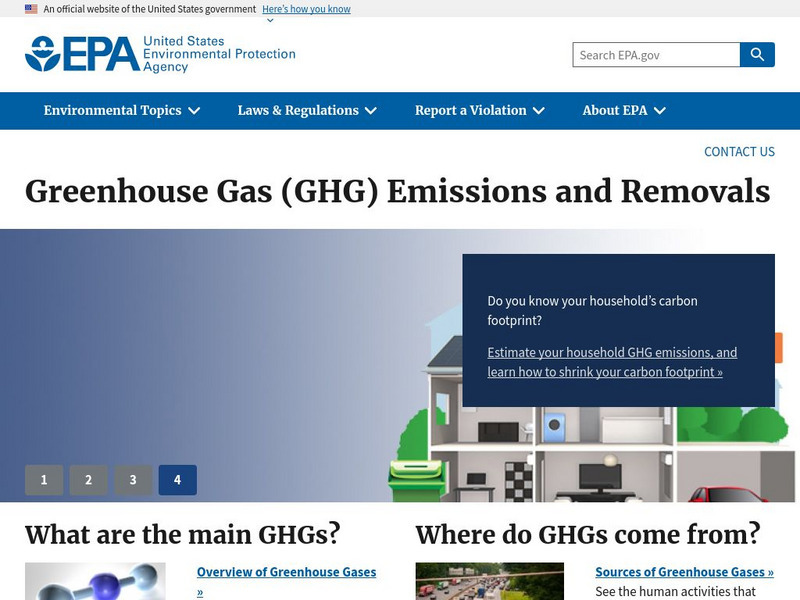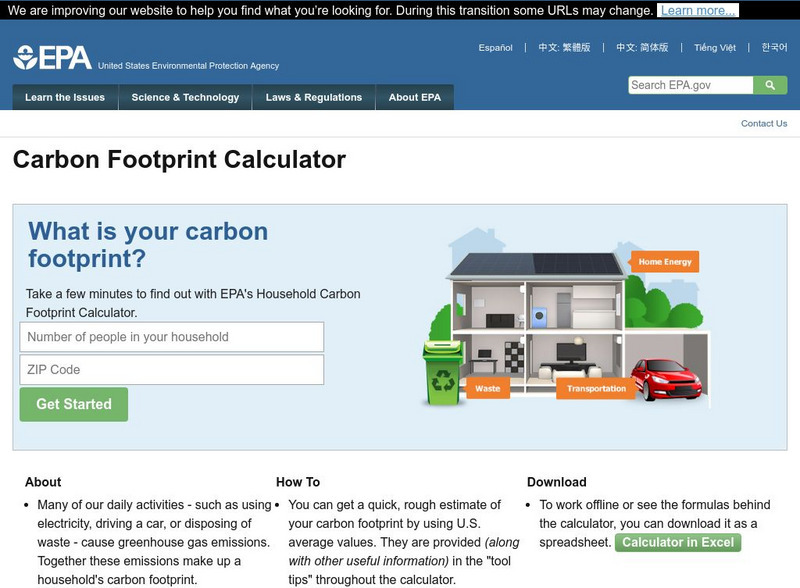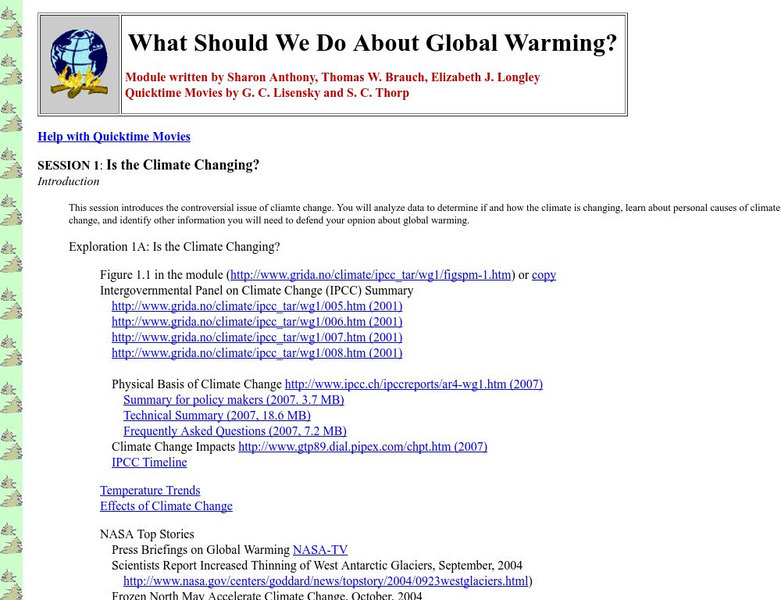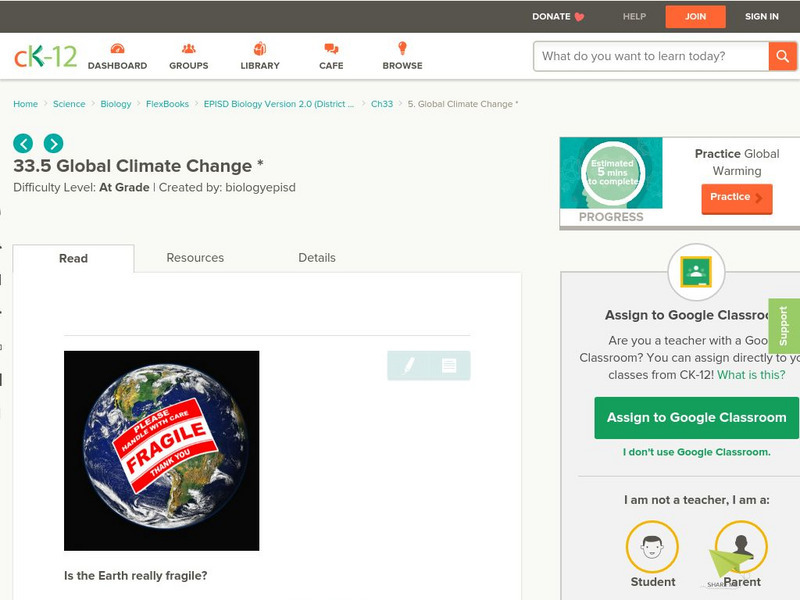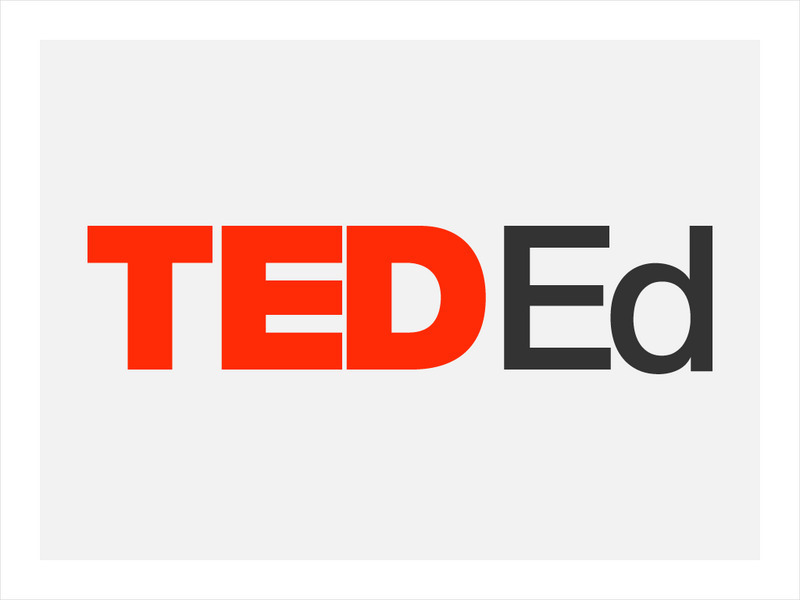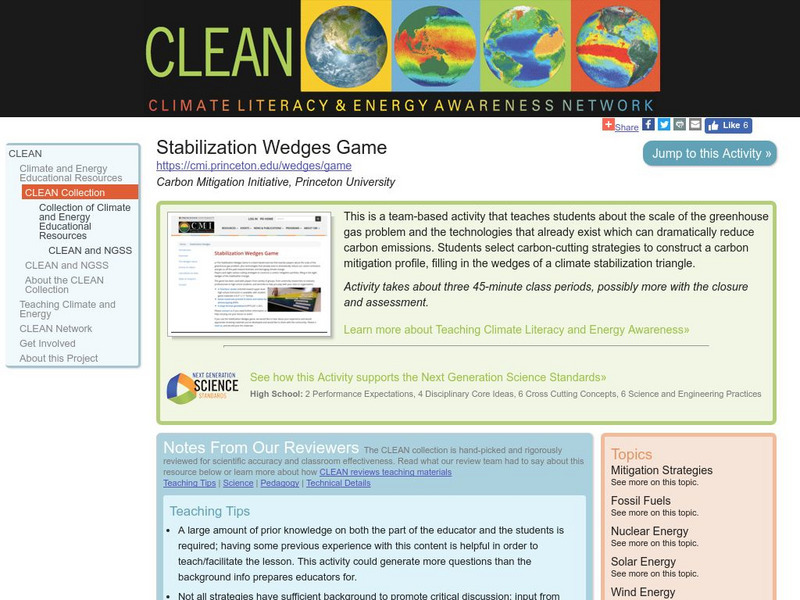University of Colorado
University of Colorado: Ph Et Interactive Simulations: Molecules and Light
Do you ever wonder how a greenhouse gas affects the climate, or why the ozone layer is important? Use the sim to explore how light interacts with molecules in our atmosphere.
US Environmental Protection Agency
Epa: Envirofacts Data Warehouse
Retrieve information from multiple sources of Envirofacts' System Data for your area of interest. using zip code, city, or county information.
TeachEngineering
Teach Engineering: Model Greenhouses
Students learn about the advantages and disadvantages of the greenhouse effect. They construct their own miniature greenhouses and explore how their designs take advantage of heat transfer processes to create controlled environments....
TeachEngineering
Teach Engineering: Form vs. Function
Students take a closer look at cars and learn about some characteristics that affect their energy efficiency, including rolling resistance and the aerodynamics of shape and size. They come to see how vehicles are one example of a product...
TeachEngineering
Teach Engineering: What Kind of Footprint? Carbon Footprint
Students determine their carbon footprints by answering questions about their everyday lifestyle choices. Then they engineer plans to reduce them. Students learn about their personal impacts on global climate change and how they can help...
American Museum of Natural History
American Museum of Natural History: Climate Change
A complete guide to the planet's climate change, including evidence, causes, effects, and conservation efforts.
US Environmental Protection Agency
Epa: Greenhouse Gas (Ghg) Emissions
Earth's atmosphere contains greenhouse gases. Find out what these gases are and where they come from. Also link to other information about how greenhouse gases contribute to climate change.
Annenberg Foundation
Annenberg Learner: The Habitable Planet: Energy Challenges
With this resource, users join investigators in the exploration of humans' use of and dependence on the many energy resources. Learn about new technologies such as carbon capture and sequestration as an alternative to reduce our carbon...
US Environmental Protection Agency
Epa: Household Carbon Footprint Calculator
Enter your household energy data to find out your family's total carbon footprint. Explore some actions to take to reduce your carbon emissions, and then find out your estimated savings once you take those steps.
Royal Geographical Society
Royal Geographical Society: Kenya: A Changing Nation
Kenya is home to some of the world's rarest animals and to traditional people whose way of life is under threat. Read about the Maasai people, the animals and climate of Kenya, and investigate how the country is changing.
Other
Beloit College: What Should We Do About Global Warming?
A learning module from 2007 where students investigate a set of questions on global warming. Each section has the question or activity summary and links to resources to examine. These include data on temperature trends, infrared spectra,...
Other
Gfdl: Temperature (F) Response Due to Increased Atmospheric Co2
An animated model of the Earth from the Geophysical Fluid Dynamics Laboratory showing how global temperatures increased from 1870 to 2100 due to rising amounts of carbon dioxide in the atmosphere.
CK-12 Foundation
Ck 12: Episd: Global Climate Change
[Free Registration/Login may be required to access all resource tools.] Recognize the harmful contributions of burning fossil fuels on the environment and understand the impact of the acidification of the earth's oceans.
Nature Research
Nature Education: Energy Economics in Ecosystems
This article discusses how plants and microorganisms, until recently, have mostly controlled how much carbon dioxide is released into an ecosystem, and explains how this process works. Humans' burning of fossil fuels has upset the...
American Museum of Natural History
American Museum of Natural History: Ology: Rising Co2! What Can We Do?
With this resource, students learn how much fossil fuel emissions have increased since 1600 by exploring a graph showing carbon dioxide in our atmosphere. Then answer questions and read facts about climate change over the centuries....
Khan Academy
Khan Academy: Complexity and the Future
Will our descendants enjoy lives that are richer, more fulfilled, healthier, and in general better than those of today? Or will human societies collapse under the strain of depleted resources, brutal conflicts, and environmental damage?...
Exploratorium
Exploratorium: Ice Stories: Dispatches From Polar Scientists: Greenhouse Gases
Polar scientists offer an article identifying the research and observations made on greenhouse gases. Why is there so much carbon dioxide in the atmosphere today? Scientists work diligently to determine the causes and effects of these...
BBC
Bbc: News: Guide to Climate Change
The BBC offers an interactive guide to climate change, including a sliding scale depicting climate change from 1885 to 2099, animation which explores how the greenhouse effect works, and detailed diagrams exploring the carbon cycle, the...
TED Talks
Ted: Ted Ed: The Networked Beauty of Forests
Deforestation causes more greenhouse gas emissions than all trains, planes and automobiles combined. Suzanne Simard examines how the complex, symbiotic networks of our forests mimic our own neural and social networks- and how those...
Climate Literacy
Clean: Stabilization Wedges Game
A team-based exercise that teaches players about the scope of the greenhouse gas problem, plus technologies that already exist to dramatically reduce our carbon emissions and help steer Earth away from climate change.
US Environmental Protection Agency
Epa: Student Guide: Greenhouse Effect
Learn the science behind the greenhouse effect.
PBS
Pbs Learning Media: Global Climate Change: The Effects of Global Warming
Young scholars conduct an investigation to determine CO2 levels in four different gas samples, examine evidence of global warming in our environment, and consider their own role in contributing to global warming.
Climate Literacy
Clean: Is Climate Change Happening?
A lesson studying climate change. Students will discuss how greenhouse gas concentrations relates to climate. This lesson is part of a series of nine-lesson module.
Other
We Calc: Your Home Water Water Energy Climate Calculator
Through a thorough survey examining your home water habits to estimate your water use as well as connect the water energy use in your home to the emission of greenhouse gas.




